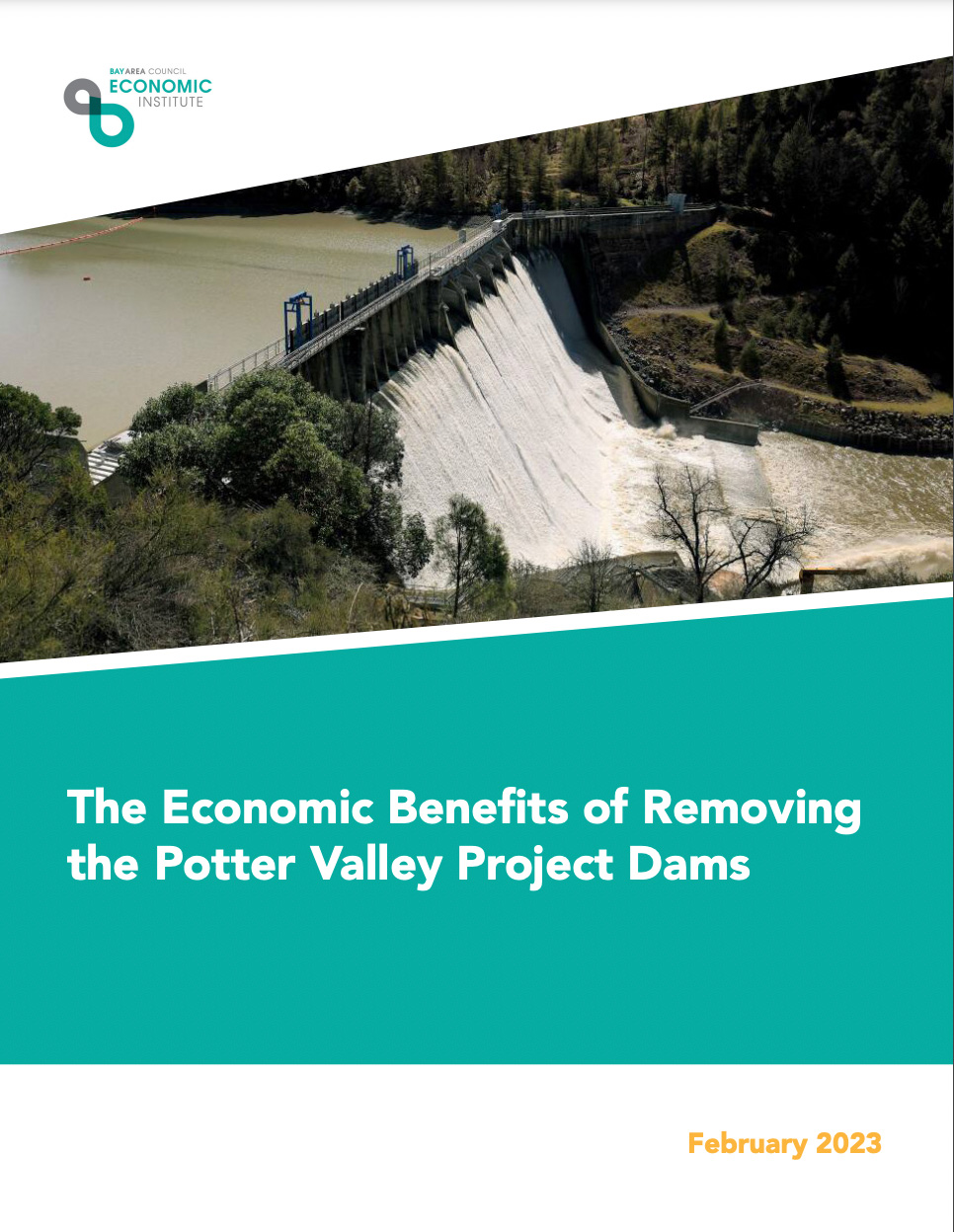New Study Shows Eel River Dam Removal Would Benefit Local Economy
A new report from the Bay Area Council Economic Institute details the beneficial local economic impacts that would be generated by the removal of Scott and Cape Horn Dams, two aging dams on the Eel River that are part of the hydroelectric Potter Valley Project. The report estimates dam removal would create between 1,037 and 1,332 local jobs and would boost the regional economy to the tune of $203 million to $278 million. In addition to boosting the local economy, dam removal is crucial for healthy fish populations, clean water, and Tribal cultural practices.
What is the Potter Valley Project?
Located on the Eel River 20 miles northeast of Ukiah, the Potter Valley Project includes two Eel River dams, a diversion tunnel that moves water out of the Eel River watershed and into the East Branch of the Russian River, and a powerhouse. In the vicinity of the Project, the Eel River flows through the ancestral lands of the Wiyot Tribe and the Round Valley Indian Tribe. The Project’s owner, Pacific Gas and Electric Company (PG&E), has allowed its license for the operation to expire and is currently working with federal regulators to develop a decommissioning plan for the facilities.

Scott Dam and Cape Horn Dam are more than 100 years old. Equipment failures earlier this year caused project owner PG&E to suspend hydropower operations. The dams are seismically unsound and completely block fish passage to high quality cold-water habitat in the Eel River headwaters. Removing the Potter Valley Project’s dams would make the Eel River California’s longest free flowing river and would reconnect salmon and steelhead with almost 300 miles of spawning habitat in the upper mainstem Eel River. Scientists recognize the Eel River as having the potential to support the rebound of these fisheries throughout the North Coast region.
The water in the Eel River is listed as impaired under the Clean Water Act, indicating negative impacts on the region’s Tribes and other water users. The Tribes in the region, the Wiyot Tribe and the Round Valley Indian Tribe, have also suffered drastically reduced access to their fishery as well as destruction of many cultural practices from the damage caused by the Potter Valley Project to the Eel River ecosystem.
Benefits of Dam Removal
Dam removal on the Eel would benefit fish, water quality, cultural practices important to Tribes, and, as outlined in the new report, the local economy.
“This report offers further evidence that removing the Potter Valley Project facilities is far more beneficial than leaving them in place,” said Curtis Knight, executive director of California Trout, which commissioned the study. “Moving forward to quickly restore the Eel River to a free-flowing state will bring significant economic benefits to the five local counties. Just as importantly, dam removal is key to recovering imperiled salmon and steelhead populations native to the river.”
The report looked at the projected economic benefits of dam removal specifically for Humboldt, Lake, Marin, Mendocino, and Sonoma Counties as well as for California as a whole. Every dollar spent on dam removal is expected to generate almost twice that amount in economic output. For every million dollars put into the effort, nine jobs would be created. The report explains that construction jobs associated with dam removal would generate ripple effects in the region, as construction workers would also boost local economic activity in sectors including food service, entertainment, retail, and healthcare.
“We analyzed several different scenarios for how each of the dams might be removed, including options that would maintain the ability to divert water into the Russian River watershed after the dams are gone,” said Jeff Bellisario, one of the report authors and Executive Director of the Bay Area Council Economic Institute. “Regardless of the approach, there’s no doubt that removing these facilities would provide a significant economic benefit to this relatively rural region.”
Because the Potter Valley Project’s facilities are located in Lake and Mendocino Counties, the report projects the local economic benefits related to dam removal would be concentrated in those counties but notes that benefits would also be felt to a lesser extent in Humboldt, Sonoma, and Marin Counties. For all of California, including the impact to the five-county region, removing the Potter Valley Project facilities would generate up to $345 million in total economic output, according to the study.
“Dam removal will be hugely beneficial for sensitive fish populations and the health of the Eel River as a whole,” added Charlie Schneider, Lost Coast Project Manager for CalTrout. “This report shows clearly that removing these outdated dams would also significantly benefit the local economy.”
Learn more about CalTrout's coalition work to free the Eel at freetheeel.org.
Funding for the study was provided by the Open Rivers Fund, a program of Resources Legacy Fund.
The full economic impact report can be accessed below.







